Midweek Review
Genocide charge reiterated
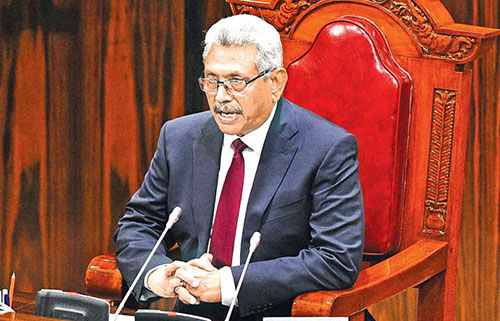
August 20, 2020, parliament: President Gotabaya Rajapaksa delivers his policy statement.
By Shamindra Ferdinando
Lawmaker Gajendrakumar Ponnanbalam, 46, on August 21, in Parliament, alleged that the Tamil community, in the North-East, had been subjected to genocide, Sri Lanka committed war crimes during phase IV of the war and that they wanted international accountability.
Ponnambalam deviated from the Geneva Accountability Resolution, co-sponsored by the previous UNP-SLFP/UPFA coalition, in Oct 2015. That resolution was meant to set up hybrid war crimes courts, comprising local and foreign judges, in terms of a tripartite agreement, involving Sri Lanka, the US and the four-party Tamil National Alliance (TNA).
Having represented the LTTE mouthpiece, the TNA twice, in Parliament, in 2001 and 2004, Ponnambalam addressed Parliament, last week, as the leader of the Ahila Illankai Tamil Congress (AITC), a constituent of the Tamil National People’s Front (TNPF). The TNPF, established in 2010, had never been previously represented in Parliament, though it contested both the 2010 April and 2015 August parliamentary polls. In addition to Ponnanbalam, the TNPF secured one National List slot. Ponnambalam accommodated Selvarasa Gajenthiran, who quit TNA, along with him in 2010, on the National List.
Angajan Ramanathan, elected to Parliament on the Sri Lanka Freedom Party (SLFP) ticket, from the Jaffna electoral district, was in the chair at the time Ponnambalam delivered his explosive statement. Former UPFA National List member Ramanathan is the Deputy Chairman of Committees.
Gajendrakumar dismissed an attempt made by the State Minister of Provincial Councils and Local Government, retired Rear Admiral Sarath Weerasekera, to intervene. In fact, the Sri Lanka Podujana Peramuna member Weerasekera was the only one to make an attempt to challenge Ponnambalam, in Parliament, on that day. The former Navy Chief of Staff was not successful. On the previous day, Weerasekera wanted to respond to C.V. Wigneswaran, leader of the Thamizh Makkal Kootani (TMK), though was asked by his party not to, as only party leaders addressed Parliament, during the inaugural session.
GP, Wiggy mount frontal assault
Both Ponnambalam and Wigneswaran represented the R. Sampanthan-led TNA earlier. Ponnambalam quit the TNA, in March 2010, having successfully contested the Jaffna district twice, in 2001 and 2004, with the blessings of the Liberation Tigers of Tamil Eelam (LTTE). At that time, TNA nominations, as well as the National List, were subjected to the LTTE’s approval. Former Supreme Court Judge Wigneswaran functioned as the first Chief Minister of the TNA-run Northern Province, during Mahinda Rajapaksa’s tenure as the President.
The TNA stood solidly with the LTTE as it declared Eelam War IV, in August 2006, with simultaneous attacks on the Army, both in the Northern and Eastern Provinces.
Ponnambalam attacked President Gotabaya Rajapaksa’s policy statement. The lawmaker targeted the following section in particular: “It is equally important to precisely interpret the mandate given by the people. We respect the trust that the people have placed in me and the Prime Minister and the newly elected people’s representatives. We have a clear understanding of the expectations with which the people gave such a powerful mandate to the government. We will leave no room for such expectations to be dashed for any reason. It should always be remembered that the prime responsibility of a people’s representative is to serve the public. We will be sensitive to fulfilling the needs of the people, keeping in mind that all these positions are responsibilities and not privileges.”
Ponnanmalam declared that President Gotabaya Rajapaksa’s mandate (2019 November presidential and 2020 August parliamentary polls) did not extend to the North-East region. Ponnambalam depicted the vote received by all Tamils, including SLFP’s Ramanathan and the Eelam People’s Democratic Party (EPDP) Douglas Devananda, elected to the new Parliament, as one that overwhelmingly endorsed self-determination of the Tamil speaking people. Ponnambalam justified international intervention on the basis of the Tamil community being deprived of the security it deserved.
Declaring them (Tamil lawmakers) received a mandate for Tamil rights to be recognized, Ponnambalam declared: “two nations exist in this country.”
Int’l intervention justified
“Sovereignty can never be a defence. This country has gone through a war and the whole world says that heinous crimes have been committed and the state is the number one accused party,” Ponnambalam declared, adding “Under no circumstances can any President, or any country, for that matter, try to hide behind the concept of sovereignty, to prevent accountability for heinous crimes. The victims of these heinous crimes stand as Tamils… the major victims stand as Tamils and they have consistently said that genocide has been committed and that they want international accountability.”
When Ponnambalam went on and on repeating war crimes allegations, in Parliament, former Presidents and Commanders-in-Chief, Mahinda Rajapaksa and Maithripala Sirisena, as well as war-winning Army Chief Field Marshal Sarath Fonseka, were present. Opposition Leader Sajith Premadasa, too, was present.
It would be pertinent to ask lawmaker Ponnambalam whether, as a member of the TNA, he endorsed the party’s decision to vote for the then common presidential candidate General Sarath Fonseka at the January 26, 2010 presidential election. Did the TNA decision to join the UNP-led coalition, comprising the Janatha Vimukthi Peramuna (JVP), the Sri Lanka Muslim Congress (SLMC), All Ceylon Makkal Congress (ACMC) et al unanimously approved by all constituents of the TNA?
Why North, East endorsed Fonseka?
Now that Ponnambalam reiterated genocide allegations, he owed an explanation why the Tamil community overwhelmingly endorsed Fonseka at the presidential election. Fonseka comfortably won all electoral districts, in the Northern and Eastern Provinces, though the South ensured Mahinda Rajapaksa secured a second term, with a staggering 1.8 mn majority. Mahinda Rajapaksa polled 6,015,934 votes (57.88%) whereas Fonseka received 4,173,185 votes (40.15%). Fonseka comfortably won the predominantly Tamil electoral districts of Jaffna, Vanni, Batticaloa, Trincomalee, Digamadulla and Nuwara-Eliya.
The 2010 presidential election was held less than a year after the armed forces eradicated the LTTE. Blindly accusing Sri Lanka of war crimes, and genocide, seemed ridiculous, after having voted for the very man who conducted the ground offensive that brought the LTTE to its knees, in May 2009.
Accusing the Sri Lankan state of attacking Tamils, Ponnambalam justified international intervention here. But not so much as even a word about many Tamils, including so many moderates who were butchered by the terrorists in cold blood like internationally respected jurist and TULFer Dr Neelan Thiruchelvam or even a person like TULF Leader Appapillai Amirthalingam for merely ruffling the feathers of the LTTE. Both Ponnambalam and Wigneswaran conveniently forgot how India transformed a low level insurgency, in the North, to an unprecedented terrorist campaign.
Interpreting ‘own citizens’
Ponnambalam advised President Gotabaya Rajapaksa, who, during his 20-year service as a frontline combat officer of the Sri Lanka Army, fought Indian-sponsored terrorist groups. “What the President must also realize is that when it comes to international relations, sovereignty comes with a certain baggage, one of the most cornerstone principles on which sovereignty will be compromised is if within the country the state does not protect its own citizens, or, even worse, if, within the country, the state attacks its own citizens,” Ponnambalam declared.
Perhaps, other members of Parliament should remind Ponnambalam that the LTTE, as well as half a dozen other Tamil groups, that consisted of Tamils who waged war on the State. Fighting among Tamil groups claimed the lives of hundreds before they all, except the LTTE, renounced violence, in 1990. Those who had been categorized as ‘own citizens’ also killed over 1,300 Indian servicemen and wounded over 2,500 (Oct 1987-January 1990) and blew up one-time Indian Prime Minister Rajiv Gandhi.
Former Indian High Commissioner in Colombo J.N. Dixit, didn’t mince his words when he admitted direct Indian involvement in destabilizing Sri Lanka in ‘Makers of India’s Foreign Policy: Raja Ram Mohun to Yashwant Sinha.’ India paid a terrible price for destabilizing Sri Lanka. Indian-trained Sri Lankan terrorists tried to capture power, in the Maldives, in Nov 1988. The Tamil community cannot absolve itself of the culpability for the mass killings perpetrated in the name of ‘Eelam.’ Where were those elected representatives of the Tamil people when the LTTE used the Vanni population as human shield in its last bastion Mullaitivu?
Perhaps, those propagating war crimes allegations, in Parliament, should peruse Australia-based ex-terrorist Niromi de Soyza’s ‘Tamil Tigress’, first published in 2011, two years after Sri Lankan military finished off the LTTE on the banks of the Nanthikadal lagoon. S. Attanayake of Kottawa, Pannipitiya, sent the writer ‘Tamil Tigress’ having read the Midweek piece, titled ‘Chargie’s predicament inspires novel, highlights Lanka’s pathetic response to external threats,’ published on March 18, 2020. It was a comment on award-winning author Sena Thoradeniya’s ‘Nimala Mala-Miya Giya Soldaduwekuge Nomiyena Kathawa’ (Immortal Story of a Dead Soldier). Attanayake quite rightly guessed the writer hadn’t read ‘Tamil Tigress’ hence sending it by post soon after the government lifted the ‘Covid lockdown.’
GP’s entry into TNA politics
Qualified as a barrister-at-law, in the UK, in 1997, Gajendrakumar Ponnambalam received Sri Lanka qualification as an attorney-at-law, two years later, before entering active politics, in the wake of his father Kumar Ponnambalam’s assassination, in early January 2000.
Gajendrakumar Ponnambalam’s All Ceylon Tamil Congress/Ahila Illankai Tamil Congress. Its roots can be traced to his legendary grandfather G.G. Ponnambalam QC, who was a colossus as a lawyer and politician. ACTC had been among the four parties which formed the TNA, in Oct, 2001, at the behest of the LTTE. Constituents included, in addition to Ahila Illankai Tamil Congress, the TULF (Tamil United Liberation Front) and two former terrorist groups TELO (Tamil Eelam Liberation Organization) and the PLOTE (People’s Liberation Organisation of Tamil Eelam). The TNA functioned as the political wing of the LTTE. The TNA had been subservient to the LTTE to such an extent; it recognized Prabhakaran as the sole representative of the Tamils.
The TNA remained mum when the sole representative quit the negotiating table, in April 2003, to pave the way for the presidential takeover of ministries and, subsequently, the sacking of the UNP government. Kumaratunga called for early general election, in April 2004. The LTTE unleashed violence against those who dared to challenge the TNA in the then temporarily merged North-East region. Thanks to the LTTE intervention, the TNA secured 22 seats. Having won the lion’s share of seats in the North-East region, the TNA-LTTE combine, in Nov 2005, ordered Tamils to boycott the presidential election. The move was meant to ensure UNP leader Ranil Wickremesinghe’s defeat. The UNPer lost by 186,000 votes. Those who allege the Rajapaksa Camp bribed the LTTE to disrupt election in the North and East to Mahinda Rajapaksa’s advantage should explain whether the LTTE received money from them. As the TNA announced the polls boycott, on behalf of the LTTE, it owed an explanation to the public. Did the LTTE receive money from the Rajapaksa Camp?
The truth is that the LTTE and the TNA really believed they could take care of Mahinda Rajapaksa far more easily than Wickremesinghe. Having dug its own grave, the LTTE faced a relentless three-year military onslaught, once it initiated a military offensive in the second week of August 2006.
The armed forces eradicated the LTTE, in May 2009. In the following year, the TNA backed the very man who led the campaign against the LTTE at the presidential poll.
Accusations pertaining to war crimes and genocide, in Parliament, should be examined against the backdrop of the TNA losing political clout, following the poor performance at the general election. The TNA parliamentary group now comprises 10 lawmakers. In the last Parliament, the TNA group consisted of 16. The TNA won 16 seats when it contested the general election, for the very first time, in 2001. At the 2004 general election, the LTTE threw its full weight behind the TNA to enable the coalition to win 22 seats, 14 seats in 2010 and 16 in 2015. In spite of the setback suffered by the TNA, Gajendrakumar Ponnambalam and Wigneswaran are likely to go flat out against the government.
In the wake of President Gotabaya Rajapaksa presenting his policy statement, a section of the much-depleted TNA met the Indian High Commissioner. The meeting took place on Friday, August 21. The TNA, in a brief statement issued on the same day, quoted Indian High Commissioner Gopal Bagley as having assured India’s continuing commitments to finding a resolution to the Tamil national question in Sri Lanka. The TNA delegation consisted of R. Sampanthan Mavai Senathirajah, Dharmalingam Siddarthan, Selvam Adaikalanathan and M.A. Sumanthiran. ITAK (Illankai Tamil Arasu Kadchi) leader Mavai Senathirajah is no longer an MP having been defeated at the August 05 general election.
It would be interesting to see whether Gajendrakumar Ponnambalam and Wigneswaran received invitations from the Indian High Commission.
Over 100 LTTE cadres in
custody poisoned
Let me finish this piece by reminding how the likes of Wigneswaran propagated lies. Minister Vasudeva Nanayakkara’s brother-in-law, Wigneswaran, chided the government over the July1983 violence, while insisting the need to consult India, if the government wanted to do away with the 13th Amendment, introduced in line with the Indo-Lanka Accord. Wigneswaran should know that the July 1983 violence wouldn’t have happened if not for India providing the LTTE expertise to wipe out a mobile military patrol. India sponsored terrorism here to create the conditions required for direct military intervention. The incumbent government should set the record straight, at least now.
Sri Lanka never took tangible measures against those who propagated lies as part of an overall strategy to ruin the country. Some cannot stomach the LTTE’s annihilation, on the Vanni east front, over a decade ago. Wigneswaran is one such person. Wigneswaran, and a section of the Tamil media, in August 2016, accused the military of killing over 100 LTTE combatants, in custody, by poisoning them. The PTI and NDTV were among the international media which reported unsubstantiated allegations.
Accusers placed the number of such deaths at 104. Accusations were made while the U.S. Pacific Command’s ‘Pacific Angel’ exercise was underway, in the Jaffna peninsula.
Wigneswaran brashly declared that the U.S. Air Force’s medical team, in Jaffna, would examine the former rehabilitated LTTE cadres, who, he alleged, had fallen sick because they were injected with poisonous substances, at government detention, or rehabilitation camps.
The then State Defence Minister Ruwan Wijewardene and Health Minister Dr. Rajitha Senaratne dismissed the vicious accusations. Wijewardene offered the international community access to rehabilitation facilities. What the Minister didn’t realize was that by August 2016, the vast majority of ex-LTTE combatants had been released.
The US conveniently refrained from making its position clear on Wigneswaran’s claim when the writer raised the issue with the US Embassy in Colombo. There had never been such a claim, before Wigneswaran sought to humiliate Sri Lanka with it. It would be pertinent to mention that one-time LTTE subordinate, the TNA, backed common candidate Maithripala Sirisena, at the 2015 presidential poll, having earlier supported Gen. Sarath Fonseka at the previous poll. On both occasions, the TNA delivered all northern and eastern electoral districts to Fonseka and Sirisena, who contested on the New Democratic Front (NDF) ticket with the ‘Swan’ as its symbol. The TNA did the same for Sajith Premadasa, in the North and the East at the last presidential poll, though the South overwhelmingly defeated the UNPer.
In answer to several questions The Island posed, regarding ex-LTTE cadres being poisoned, the US Embassy said: “Operation Pacific Angel is providing assistance, based on the specific needs of the local communities. Among the nearly 70 members of this multilateral assistance programme – including some medical staff and engineers from Bangladesh, Nepal, and the Maldives, as well as the United States – are over 40 doctors, providing basic medical services: dental procedures; physical therapy; general medical assistance; and optometry. These are the only services being provided.”
The writer asked the US Embassy whether it could confirm that US Pacific Command personnel, conducting medical tests on ex-LTTE cadres, allegedly poisoned by the previous government; whether they would be moved to overseas medical facility for further tests; whether the GoSL had been informed of the development; when did the TNA request the US intervention and whether the US military had conducted similar tests in other countries. For obvious reasons, the US refrained from responding to The Island queries.
The five-day ‘Operation Pacific Angle’ was launched, in Jaffna, by the then US Ambassador in Colombo Atul Keshap.
The New Indian Express quoted Wigneswaran as having said that the US Air Force’s medical team would examine ex-LTTE cadres who had been sick because they were injected with poisonous substances by the Sri Lankan armed military while they were undergoing detention, or rehabilitation. Wigneswaran, according to the New Indian Express, had told the NPC (Northern Provincial Council) that he had mentioned the plight of the former combatants in his conversation with the US Ambassador, Atul Keshap, and asked if the USAF team could examine them and give an independent report.
Wigneswaran’s allegations died a natural death. The TNA, or the US, never discussed the issue publicly. But, such calculated lies caused massive damage.
************************************************************************************
ICRC on genocide accusation
A leaked cable, dated July 15, 2009, signed by the then Geneva-based US Ambassador, Clint Williamson, cleared the Sri Lankan Army (SLA) of crimes against humanity during the Vanni offensive. The cable addressed to the US State Department, was based on a confidential conversation Ambassador Williamson had with the then ICRC head of operations for South Asia, Jacque de Maio, on July 9, 2009. Ambassador Williamson wrote: “The army was determined not to let the LTTE escape from its shrinking territory, even though this meant the civilians being kept hostage by the LTTE were at an increasing risk. So, de Maio said, while one could safely say that there were ‘serious, widespread violations of international humanitarian law,’ by the Sri Lankan forces, it didn’t amount to genocide. He (Maio) could cite examples of where the army had stopped shelling when the ICRC informed them it was killing civilians. In fact, the army actually could have won the military battle faster with higher civilian casualties, yet chose a slower approach which led to a greater number of Sri Lankan military deaths. He concluded, however, by asserting that the GoSL failed to recognize its obligation to protect civilians, in spite of its approach resulting in higher military casualties.” Sri Lanka never properly used available information, including Wikileaks revelations, pertaining to Sri Lanka and Lord Naseby’s disclosure to counter lies. The travel ban slapped on Lt. Gen. Shavendra Silva, as well as Field Marshal Sarath Fonseka, by the US is evidence of Sri Lanka’s continuing failure to set the record straight.
Midweek Review
Impact of US policy shift on Sri Lanka
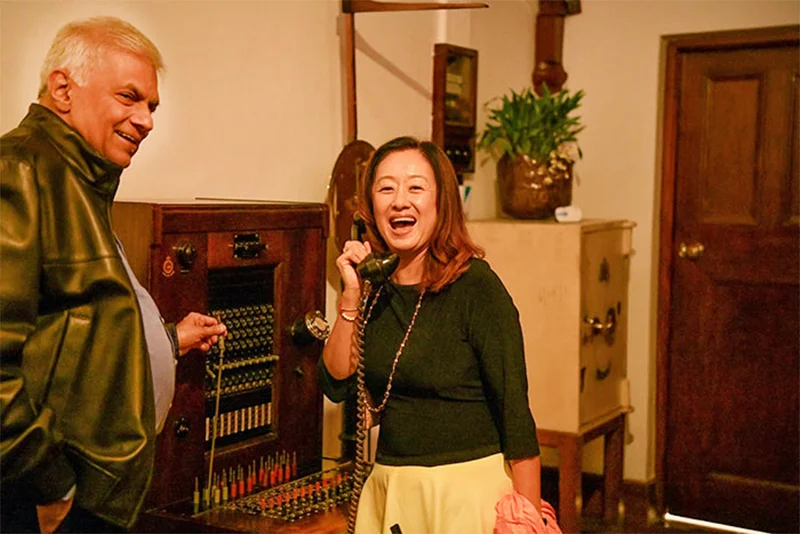
President Trump has unceremoniously overturned US foreign policy. His decision to deport illegal Indian migrants just ahead of a summit with Premier Narendra Modi, underscored the tough stance taken by the new US admiration. The much-touted US-India strategic partnership didn’t deter Trump from carrying out the much-publicized humiliating deportations of Indians. US Vice President J.D. Vance’s speech at the Munich Security Conference, recently, indicated that Trump has terminated his special relationship with Europe and is charting his own course. The upcoming Trump and Russian leader Putin’s meeting stressed that the US policy wouldn’t be shaped by European concerns over Russia. Against that background, the US is very much unlikely to pursue the Biden policy as regards bankrupt Sri Lanka. Actually, Sri Lanka’s political leadership will have to do some serious thinking and re-examining our position as Trump redraws US foreign policy.
By Shamindra Ferdinando
Since the successful conclusion of the war in mid-May 2009, despite all the naysayers, and even the likes of the then British Foreign Secretary David Milliband and French Foreign Minister Bernard Kouchner, rushing here at the eleventh hour with the hope of getting President Mahinda Rajapaksa to halt the offensive to enable them to evacuate the LTTE supremo, his family and their surviving fanatical terrorist band to safety abroad, the US appointed five Ambassadors to Colombo. Of them four were women, namely Patricia A. Butenis, Michele J. Sison, Alaina B. Teplitz and incumbent Julie J. Chung. Between the tenures of Sison and Teplitz, the only male Atul Keshap, of Indian origin, served here for a period of four years (Aug. 2015-July 2018) during the Yahapalana administration.
Ambassador Chung oversaw President Gotabaya Rajapaksa’s forced ouster in 2022. In spite of her denial, Amb. Chung’s role in President Rajapaksa’s removal is clear and cannot be disputed. Amb. Chung will soon be replaced by Elizabeth Kathryn Horst, currently the Principal Deputy Assistant Secretary and Deputy Assistant Secretary responsible for Pakistan, yet another country in which Washington is mired in regime change operations in the region.
Amb. Chung presented her credentials on Feb. 25, 2022, to President Rajapaksa, at the Janadhipathi Mandiraya. The President was flanked by State Foreign Minister Tharaka Balasuriya and Presidential Secretary Gamini Senarath. The new US envoy took office close on the heels of a major crisis within the government that compelled the President to ask for his Secretary Dr. P.B. Jayasundera’s resignation. Just five weeks after Amb. Chung took over the mission, the ‘GotaGoHome’ campaign got underway and a President, elected with over 6.9 mn votes on the SLPP ticket, was thrown out of office within four and half months by violent mobs armed with meticulous intelligence as to which politicians’ houses were to be ransacked and torched, along with those of their close supporters in a matter of a few hours, especially on May 09, 2022. Exactly two months later they completed their despicable mission by storming the Presidential palace.
The SLPP, both in and outside Parliament, accused Amb. Chung of staging the ouster of President Gotabaya Rajapaksa. Award-winning author Sena Thoradeniya (Galle Face Protest: System Change or Anarchy) and (Nine: The Hidden Story) by National Freedom Front (NFF) leader Wimal Weerawansa, MP, dealt with Amb. Chung’s sordid involvement.
However, the writer believes that the whole exercise should be examined as another arrogant US intrusion rather than Amb. Chung’s private agenda. Her job was to do the bidding of Washington. Let me stress that the US made a serious but an abortive attempt to bring President Mahinda Rajapaksa’s reign to an end in 2010. Thanks to Wikileaks we know how the US used a UNP-led coalition, that included the wartime LTTE ally the Tamil National Alliance (TNA), and the JVP, to back retired General Sarath Fonseka at the presidential election. That gamble failed. The war-winning Army Chief ended up with egg on his face with an unforgettable thrashing from the overwhelming southern electorate.
Eyebrows were raised when the outgoing American envoy recently expressed her desire to meet Sri Lanka Podujana Peramuna (SLPP) leaders at the Nelum Mawatha party office as she never bothered to do so since her arrival in early 2022.
Contrary to speculation, the outgoing US Ambassador had sought a meeting about two weeks ago before the unprecedented public exposure about the USAID’s (United States Agency for International Agency) sinister operations here and worldwide in the wake of the new US administration deciding to curtail drastically its operations for being a white elephant as America itself is being confronted with a fast developing and yet to be fully fathomed economic crisis, which might even exceed the worldwide Great Depression that came with the 1929 stock market crash. On her arrival at Nelum Mawatha last Friday (14) Amb. Chung was received by SLPP General Secretary and Attorney-at-Law Prasad Kariyawasam. The SLPP delegation was led by its National Organizer Namal Rajapaksa and one of the three lawmakers in the current Parliament. Having accused her of being in the thick of the regime change, the SLPP’s readiness to meet Amb. Chung, too, is a mystery.
It would be pertinent to briefly explain the USAID’s global objectives as the vast majority wrongly believed the agency is meant for humanitarian work. It is definitely not a charity. Its main objective is to strengthen capabilities of US agents, or assets, at local and regional levels regardless of the status of Washington’s relationship with the targeted country.
These agents, or assets, are available for the US at any time as Washington desired. Pentagon, the State Department or even the Central Intelligence Agency (CIA) used its resources under whatever circumstances. If we closely examine the pattern of USAID operations, as well as other related organizations that had been active here over a period of time, even our legislature is within the sphere of their influence. In other words, they obviously have direct access to politicians and officials who wield power over key institutions. The private sector, too, became part of the US operation carefully expanded countrywide.
By the time Amb. Chung arrived here. US assets were in place at different levels ready to carry out directives. Those who pointed a finger at Amb. Chung never bothered to examine the background and comprehend the gradual build-up that allowed the gathering of all elements, under the social media fuelled ‘GotaGohome’ campaign.
The US mission here had done a tremendous amount of work, especially beginning with the Amb, Keshap’s time, to enhance the capacities of their existing assets and identify and develop new assets.
What really prompted Amb. Chung to suddenly seek a meeting with the SLPP? Did National List MP Namal Rajapaksa’s call for the setting up of a Parliamentary Select Committee (PSC) to probe USAID funding, influence her decision? But that cannot be as the US Embassy made the request before the USAID controversy. Perhaps, SLPP General Secretary Kariyawasam expressed concern over Amb. Chung’s frequent visits to the JVP headquarters at Pelawatte, whereas she ignored the SLPP.
Appearing on a live television programme, Kariyawasam pointed out that Amb. Chung had plenty of time for the JVP, a party with just three MPs, while the SLPP, in spite of being represented by 145 MPs, never received the US envoy’s attention.
Perhaps Amb. Chung didn’t really feel the requirement to visit Nelum Mawatha as she maintained a close contact with the SLPP founder Basil Rajapaksa.
Ambiguity over objectives
It would be pertinent to ask both the sponsors and recipients whether various foreign-funded projects achieved their objectives.
The following are some of the USAID-funded projects launched, beginning 2017: [1] USD 19 mn social cohesion and reconciliation project implemented by Global Communities (July 2018-Dec, 2023) [2] Analysis of social cohesion and reconciliation implemented by US Institute of Peace at a cost of USD 700,000 (Aug. 2018-Feb. 2024) [3] USD 15 mn project implemented by Chemonics International Inc. to strengthen the justice sector, including the Justice Ministry and Office of Attorney General (Sept. 2021-Sept. 2026) [4] USD 17 mn project carried out by National Democratic Institute, International Republican Institute and International Foundation for Electoral System in support of Parliament and other government institutions, including the Election Commission (June 2020 – June 2024) [5] USD 14 mn worth project in support of civil society meant to achieve good governance reforms and strengthen accountability. Implemented by Management Systems International (Feb. 2018-Aug. 2024) [6] USD 7.9 mn scheme to strengthen media implemented by International Research and Exchanges Board Inc. (Aug. 2017-April 2023) [7] SAFE Foundation implemented a programme at a cost of USD 3.9 mn aimed at combating human trafficking (Oct. 2021-Sept. 2026) [8] USD 1.6 mn project to enhance protection for those threatened by gender-based violence (Oct. 2021-Sept. 2026). Implementing agency Women-in-Need [9] USD 3.6 mn project for the benefit of plantation community implemented by Institute of Social Development (June 2022-June 2027) and [10] a staggering USD 19 mn project meant to strengthen the civil society by unnamed private agencies (Sept. 2022-August 2027).
Interestingly, high profile USAID operations implemented in collaboration with successive governemnts covered the Justice sector (Justice Ministry and Office of Attorney General), Parliament as well as the Election Commission.
Over the years USAID with a massive budget that even exceeded the CIA’s and allied organizations have built up a system that served the interests of the US. That is the truth. Sri Lanka has cooperated not only with the US but other organizations, such as the UNDP, to allow them influence in Parliament. The USAID and UNDP have ‘secured’ Parliament by lavishly spending funds on various projects. In spite of spending millions in USD with the 2016 agreement between Parliament and USAID being the single largest project, what they have achieved here is nothing but a mystery.
Successive governments have encouraged USAID, UNDP and other interventions. They felt happy as external sources provided the funding. Let me give an example of how the UNDP stepped-in for want of sufficient public funding for vital government initiatives. Sometimes, they advanced their political project in the guise of helping the government of the day.
On May 13, 2021, the then Attorney General Dappula de Livera, PC, opened the USAID funded state-of-the-training facility that included a boardroom, auditorium, computer laboratory, and other facilities. The outspoken AG also launched an electronic system to track cases and legal files. The launch of the training facility, electronic diary and file management system, and the Attorney General’s Department website were also attended by Supreme Court Judge Justice Yasantha Kodagoda P.C., Acting Solicitor General Sanjay Rajaratnam P.C., the Secretary of the Ministry of Justice M.M.P.K. Mayadunne, and virtually by DCM Kelly and USAID Mission Director Reed Aeschliman.
The US Embassy, in a statement issued on that quoted AG Livera as having said: “This is another first in the 136-year history of the Attorney General’s Department. The opening of the training centre is a notable, salutary achievement that meets a long-felt need for continuous learning and professional development.” The AG was further quoted as having said these new tools would “drive the institution from strength to strength.”
If such facilities were so important why on earth the Attorney General’s Department failed to take tangible measures to meet that particular requirement.
Those who demand investigations into USAID must realize that their role is much more complicated than alleged and reported in some sections of the media. Among the beneficiaries were the Sri Lanka Judges’ Institute.
American Corner in Jaffna
The US Embassy established an American Corner in Jaffna with the collaboration of Jaffna Social Action Centre (JSAC), an NGO that particularly promoted women and children rights. Formed in 2003 in the North as the Liberation Tigers of Tamil Eelam (LTTE) was preparing to launch Eelam War IV, JSAC, over the years, developed into a recipient of US funding. JSAC is among the groups promoting LGBTQ in the Northern and Eastern Provinces. JSAC annually participates in the much-touted 16 Days of Activism Against Gender Based Violence campaign. The then US Ambassador Butenis attended the opening of the American Corner. JSAC, in its website, has revealed an impressive list of partners and donors.
Perhaps JSAC should explain how it served the interests of ordinary people, especially during the 2003-2009 period when the LTTE stepped up forcible recruitment of children, including girls. Forced conscription continued unabated as the military slowly but steadily rolled back the LTTE fighting formations, towards the east coast, until they were trapped in a sliver of land in the Mullaitivu district.
Sri Lanka should be grateful for US assistance over the past decades. The ordinary people benefited from such help but later Washington weaponized the setup as various interested parties queued up to secure lucrative contracts.
Amb, Chung, in late Sept. 2022, moved the American Centre in Colombo, that had been in existence for over seven decades, to the new US Embassy building. This was a couple of months after Aragalaya (March – July 2022) forced Gotabaya Rajapaksa out of office. The American Centre in Colombo had been first located at the Millers Building in Colombo, then at Galle Face Court, followed by Flower Road, before moving to the Sri Ramya at 44, Galle Road.
The American Corner in Kandy was established in 2004. In addition to Jaffna, Colombo and Kandy, there are similar facilities in Matara and Batticaloa.
The recent declaration by Bharatiya Janata Party MP Nishikant Dubey, in the Indian Parliament, that the USAID had been funding organisations with a view to creating unrest cannot be ignored. The BJP’s declaration underscored the gravity of the situation. Those who discarded repeated accusations by National Freedom Front (NFF) leader Wimal Weerawansa as regards US interventions here must take a fresh look at the developments taking place since Donald Trump’s return for a second term.
Dubey alleged the USAID funded organizations that carried out protests against the Agniveer initiative of the government, backed caste census, and supported Naxalism in India.
On behalf of the BJP, Dubey asked for a probe into whether Congress and the Gandhi family-controlled Rajiv Gandhi Foundation had received USAID funds through George Soros’ Open Society Foundations (OSF) for conducting activities, including the campaign for a caste census and against the Agniveer scheme introduced by the government. The MP claimed OSF received ₹5,000 crores from USAID to “break up India”. He raised the issue during zero hour.
The BJP MP’s accusations seemed somewhat surprising as India, under Narendra Modi’s leadership, established close relations with Washington and is a member of the four-country Quad, comprising the US, Australia, Japan and India meant to counter Chinese expansion.
Why subvert India? Is the question in everybody’s mind? President Trump, during a joint press conference with Premier Modi, speculated about the possibility of USAID role in the Lok Sabha elections last year. Perhaps Trump is playing politics even at the expense of the US as he sought to dismantle USAID.
The Trump administration has imposed a global stop-work directive on USAID, suspending most aid initiatives, except for critical food relief programmes.
However, India, too, had been blamed for interfering in internal affairs of other countries. Recently Canada alleged that India intervened in its electoral process. Canada named China as the other offender. India has strongly refuted the Canadian allegation. It would be pertinent to mention that Canada had been playing politics with Sri Lanka for many years as major political parties sought to exploit the post-war developments for their advantage. New Delhi also accuses Canada of encouraging Khalistan separatists operating from there.
Canadian Parliament, in May 2022, unanimously declared that Sri Lanka perpetrated genocide in a bid to appease Canadian voters of Sri Lanka origin.
The expansion of the USAID project here should be examined against the backdrop of Geneva adopting a US accountability resolution, co-sponsored by the treacherous Sirisena-Wickremesinghe government in 2015. The US backed Sirisena’s candidature at the 2015 presidential election. That was in line with their overall strategy to end the Rajapaksas rule, perceived to be China-friendly. The US funded the 2015 UNP-led campaign that involved the TNA and JVP as well. A group of civil society groups, led by the National Movement for Social Justice (NMSJ), backed Sirisena’s candidature, who switched sides at the last moment having been in the Rajapaksas camp throughout his political career and it was done after having a hopper feed with them the previous night.
Having betrayed his own party in 2014, Sirisena has ended up politically irrelevant. That is the price the one-time SLFP General Secretary had to pay for switching sides for personal gain. The former President is most unlikely to get an opportunity to re-enter Parliament ever again.
The NPP will have to be cautious how it handles the situation against the backdrop of developing political and economic upheaval in Washington as we may have never seen hitherto. The way the new administration addressed much more complicated issues, such as the Russia-Ukraine war in a manner seriously inimical to the European powers and pullout from the Geneva-based UNHRC and WHO meant that Trump has already turned US foreign policy upside down.
Midweek Review
Revisiting Humanism in Education:
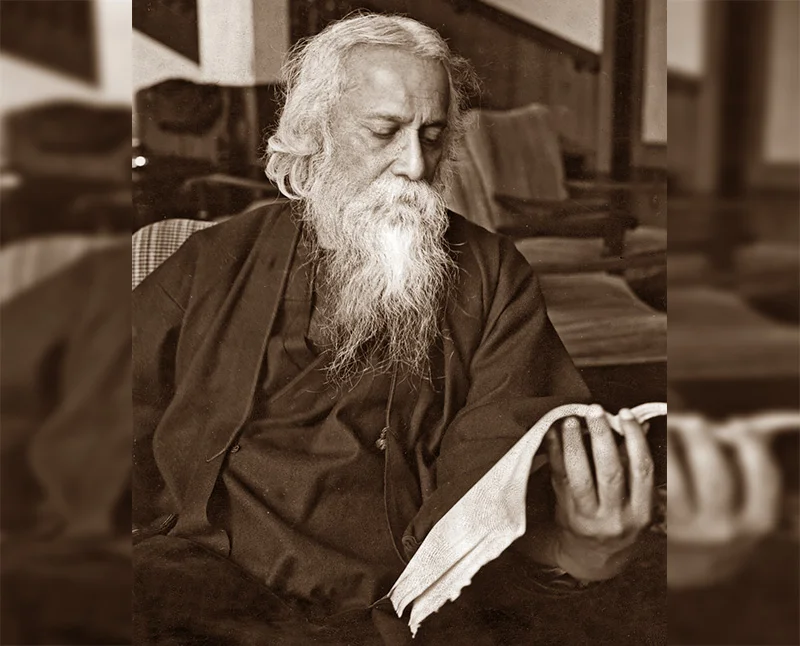
Insights from Tagore – III
by Panduka Karunanayake
Professor in the Department of Clinical Medicineand former Director, Staff Development Centre,
University of Colombo
The 34th J.E. Jayasuriya Memorial Lecture
14 February 2025
SLFI Auditorium, Colombo
(Continued from18 Feb.)
Tagore had an important answer to the question of whether the economic or the political should enjoy the primacy of place, in designing educational policy. He said: “Economic life covers the whole base of society, because its necessities are simplest and the most universal. Educational institutions, in order to obtain the fullness of truth, must have close association with this economic life.”
Sometimes I have difficulty understanding why Tagore, in spite of his appreciation of science and disdain for superstition, still lavishly exalted his traditional dieties and the scriptures. I think he did so because he saw a remarkable practical utility in them for the organisation of society and because they carried innumerable lessons for human conduct – for which science and technology, or even modern administration, had not yet furnished any suitable alternative.
Besides, it is clear that he admired religion’s potential to bring peoples together. In The Religion of Man, he wrote: “On the surface of our being we have the ever-changing phases of the individual self, but in the depth there dwells the Eternal Spirit of human unity beyond our direct knowledge.” But of course, religion seldom brought humanity together. And whenever it played the divisive role, he did not blindly follow its precepts.
The stickiest issue in India for the modern philosopher is probably its caste system, and Tagore had no qualms about repudiating it:
“…differentiation and separation of vocations and trades, professions and callings on which the caste system originally rested has become totally extinct and it is altogether impossible to maintain it any longer. Yet all the taboos, external restrictions and customs associated with the varna system are still in place, static and intact. It seems we must put up with the cage with all its iron bars and fetters though the bird for which it was made is dead and gone. We provide bird feed every day but no bird feeds on it. In this way, due to the cleavage between our social life and social customs, we are not only being inhibited and obstructed by unnecessary, outmoded arrangements, we cannot live up to our professed social ideals, either.”
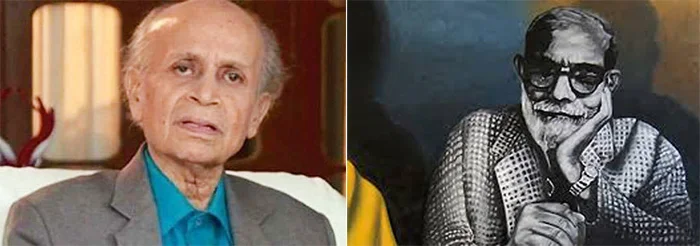
Prof. Carlo Fonseka / Dr. Abrahm T. Kovoor
I wish that for our country, we could replace the phrase ‘caste system’ with our own ‘outmoded arrangements’ – such as astrology, superstitious rituals and harmful so-called healing practices – and carefully re-read that quote. Sadly, our populace is filled with superstition, myth and pseudoscience – as a cursory glance at the supplements of any weekend Sinhala newspaper would show. Here, the high literacy rate actually works against the nation! Our public intellectuals must also take the blame, because they have failed to sustain the good work that had been done in the 1970s by intellectuals like Dr E.W. Adikaram, Abraham Kovoor and Professor Carlo Fonseka.
Another interesting point in his ideas is his desire to see education as a tool for everyone, not just the educated few. Reminding us on ancient Indian education and learning, he said:
“There was a regular traffic between specialised knowledge and ordinary knowledge. Scholars, pundits or learned society did not have an antithetical relationship with the less learned segments of society…There was hardly a place in the country where the Ramayana, the Mahabharata, the Puranic myths and religious discourse did not spread in a variety of ways. Even the theoretical philosophical issues which were rigorously, relentlessly discussed and debated in philosophy and metaphysics always filtered down to the mind of the people…In those days learning was the asset of the entire society and not the acquisition of the learned few.”
In our own country, in contrast, I wonder whether expanded access to education has had a similar effect. In spite of decades of education in swabhasha and wide access to education, knowledge is a tool of separation, seclusion and self-aggrandisement for the few who win the lottery. Is this the fault of the education or the educated? Perhaps both. The educated use their learning as a weapon rather than as a tool to serve, a manifestation of the fierce competitiveness and the fixed mindset that pervades the successful products of our education. At the same time, as Tagore pointed out, it is the fault of education too:
“The rains of our education are falling a long distance away from where the roots of our whole life lie…Our ordinary daily life has no use for the education we acquire…It is unjust to blame this on students. Their world of books and the world in which they live everyday are poles apart…That is why it is seen that the same person who has formidable erudition in European philosophy, science and ethics tenaciously clings to the age old superstitions…We are no more amazed when we see that on the one hand he is separately enjoying literature full of varied sentiments while on the other he is busy only with making money…”
These are a few fundamentals that can be gleaned from Tagore’s second phase. They aren’t many, and perhaps they aren’t as earth-shattering as one might expect. But I feel that they are exactly what we are lacking today and prevent education from playing a nation-building role. If we can get these right, we actually need to get very little else right.
Phase 3: ‘Freedom from bondage’
Tagore’s role and position as an unrepentant internationalist at the time when India was demanding swaraj is well known. He was opposed to nationalism, and in fact correctly identified colonialism itself as a manifestation of the nationalism of the British – so he asked, if one were anti-colonialist, how could one be nationalist also?
But his internationalism was not a rootless existence floating aimlessly in the air. He was clear that one must be rooted in one’s own soil, strongly and firmly – it is from here that one must reach out to the wealth of the world. In another beautiful simile, he urged us not to fear the wind, and to open the windows of our house to let that wind in. He would assure us that we would be able to retain the good that the wind blew in and get rid of the bad. He also said that as long as our house had a firm foundation, the wind will not blow it away. So for him, the first step of being an internationalist is studying one’s own soil and placing a firm foundation for one’s existence. He admired and studied tradition without being a traditionalist.
With regard to Indian universities of his day, he lamented the fact that these were European grafts and nothing like India’s ancient intellectual heritage, such as Nalanda, Wikramshila or Takshasila. He lamented the type of intellectual this would produce. He wrote in 1932:
“We receive European learning as something static and immutable and consider it the height of modernity to cull and recite sentences from it. For this reason we lack the courage to reconsider it or think about it from a new angle. Our universities have nothing to do with and are cut off from the acute questions, dire necessities and extreme hardship facing the people of the country…Like parasites our mind, attached to text books, has lost its ability to find its food and invent by itself.”
These words seem no less relevant to our own universities, 90 years after they were written.
Tagore’s belief in internationalism and its effect on his philosophy of education is captured by his description of Visva-Bharati, the higher education institute he set up in 1921 using the Nobel Prize money: “Visva-Bharati represents India where she has her wealth of mind which is for all. Visva-Bharati acknowledges India’s obligation to offer to others the hospitality of her best culture and India’s right to accept from others their best.”
Conclusion
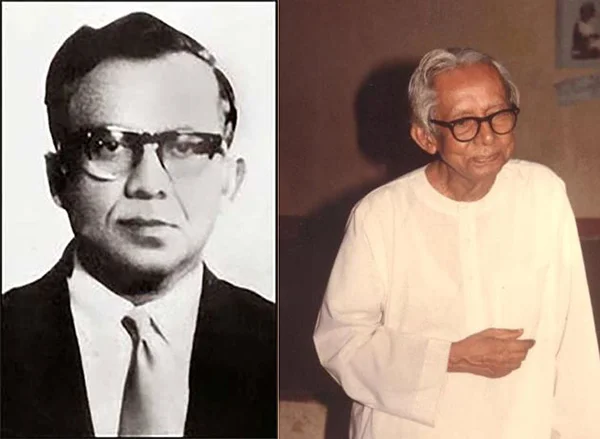
Prof. J. E. Jayasuriya / Dr. E. W. Adhikaram
Ladies and Gentlemen: I am afraid time would not permit me to cover the whole breadth of Rabindranath Tagore’s complete educational philosophy, and I wouldn’t even pretend to cover it in depth. For example, I didn’t touch on other important aspects that Tagore spoke of, such as school administration, advice for teachers, maintaining discipline without corporeal punishment, carrying out research and promoting creativity, women and education and so on. Forgive me for only scratching the surface. But the topic of Tagore’s educational philosophy is so vast that nothing wider would be possible in a short time.
You will also note that my talk was not filled with anecdotes of incidents and peculiarities at Santiniketan – like how classes were conducted under trees or how the gurudev once conducted a class in the rain for cattle when the students didn’t want to come out and get wet. These are not the timeless substance of the tale; they are only its time-sensitive ornaments.
If, on the other hand, I have been able to whet your appetite for his educational philosophy, and also convinced you that he had patiently worked on and presciently invented an antidote to today’s problems of education, I would be content for now. Balance was his antidote. My goal this evening was to place the seeds of his ideas in your minds, and hope that they will grow, be nourished and be pruned and manicured into a contextually appropriate shape in the months or years to come.
Selected bibliography
Dasgupta, U. (2013). Rabindranath Tagore: A Biography. Oxford University Press. (Translated by hiisß ckl l=udr- mßj¾;l (2024).rúkaøkd;a ;df.da¾-udkj ksoyi iy úúO;ajh kqf.af.dv iriú m%ldYlfhdaව)
Dore, R. (1976). The Diploma Disease: Education, Qualification and Development. London: George Allen & Unwin (republished in 1977 by Institute of Education, University of London).
Gunasekara, P. (2013). moaud .=Kfialr – kkaofiak .%duSh wOHdmk l%uh^1932-1939) lkakka.r;=udf.a wu;l l< fkdyels w;ayod ne,Sula fld<U iQßh m%ldYlfhda: කන්නunasekara, S.P. (2012). iuka mqIamd .=Kfialrම(2012). rúkaøkd;a ;df.da¾ fld<U tia f.dvf.aසහiyifydaorfhda(Basedon Rabindranath Tagore: The Myriad Minded Man (1995) by Krishna Dutta and Andrew Robinson, and other works.)
Illich, I. (1970). Deschooling Society. USA: Harper & Row (republished in 1973 by Penguin Education, Harmondsworth, England).
Iyengar, K.R.S. (1987). Rabindranath Tagore: A Critical Introduction. London: Oriental University Press.
Kripalani, K. (1961). Tagore: A Life. New Delhi: National Book Trust, India (author publication, republished in 1971 by National Book Trust, India).
Maithra, S., translator (2014). Education as Freedom: Tagore’s Paradigm. New Delhi: Niyogi Books.
Navaratnam, R. (1958). New Frontiers in East-West Philosophies of Education. Calcutta: Orient Longmans.
Neogy, A.K. (2010). Santiniketan and Sriniketan: The Twin Dreams of Rabindranath Tagore. New Delhi: National Book Trust, India.
Samuel Ravi, S. (2024). Philosophical and Sociological Bases of Education (2nd edn). Delhi: PHI Learning. (Chapter 13: ‘Rabindranath Tagore’, pp. 163-179.)
Sarathchandra, E.R. de S. (1942). ‘Through Santiniketan eyes’. Kesari People’s Weekly (Jaffna) serialised from 2(9) to 2(17) and compiled by Goonetileke, H.A.I., also available translated to Sinhala ^iqpß; .ï,;a-mßj¾;l ප(2001). ශYdka;s ksfla;kfha weiska fld<U tia f.dvf.a iy ifydaorfhda).
Venn, G. (1965). Man, education and work. In, Cosin, B.R., editor: Education: Structure and Society. Harmondsworth: Penguin Books. (Chapter 6, pp. 97-107.)
Venn, G. (1971). Preparation for further preparation (editorial). Educational Leadership 1: 339-341.
Midweek Review
Posy for the Unsung
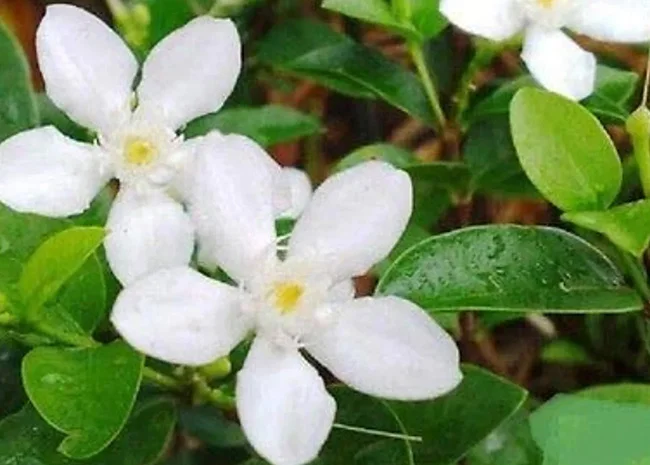
By Lynn Ockersz
You may call it a pilgrimage,
This yearly trudge she undertakes,
A posy of dainty flowers in hand,
To a rock-pile on a secluded hill,
Reeking of the graveyard’s silence,
Which covers her son’s remains,
Whom they bound and whisked away,
With dozens of other angry young men,
To a high place where elders say,
They were made to dig their graves,
At the point of smoking Ak-47 guns,
But all that scores of mothers such as her,
Have earned for their long nights of pain,
Are yellowing number tags for the missing,
Issued within stone walls of official silence.
-
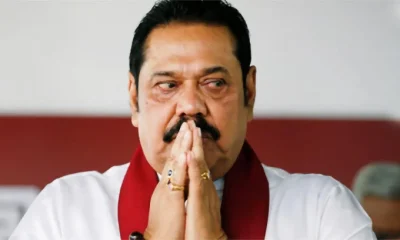
 Features6 days ago
Features6 days agoDon’t betray baiyas who voted you into power for lack of better alternative: a helpful warning to NPP – II
-

 News4 days ago
News4 days agoCommercial High Court orders AASSL to pay Rs 176 mn for unilateral termination of contract
-
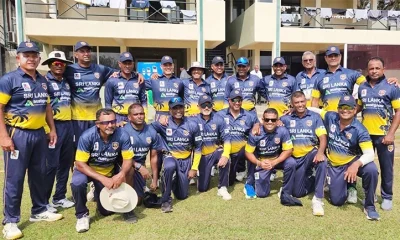
 Sports3 days ago
Sports3 days agoSri Lanka face Australia in Masters World Cup semi-final today
-
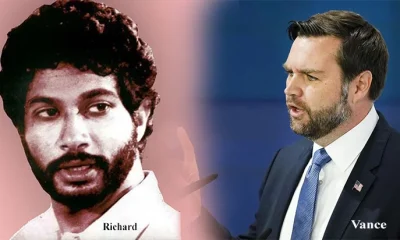
 Features6 days ago
Features6 days agoTwo films and comments
-
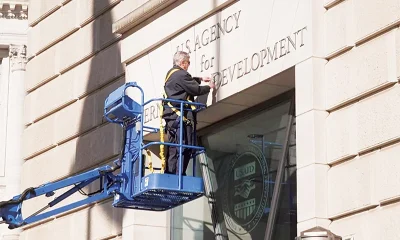
 Features5 days ago
Features5 days agoUSAID and NGOS under siege
-
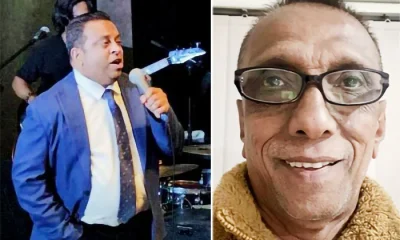
 Features5 days ago
Features5 days agoDoing it in the Philippines…
-

 News3 days ago
News3 days agoCourtroom shooting: Police admit serious security lapses
-
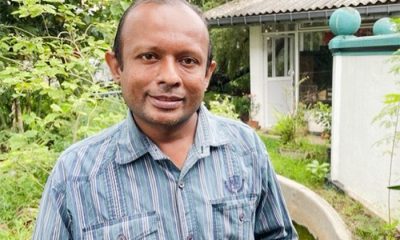
 News4 days ago
News4 days agoFSP lambasts Budget as extension of IMF austerity agenda at the expense of people











